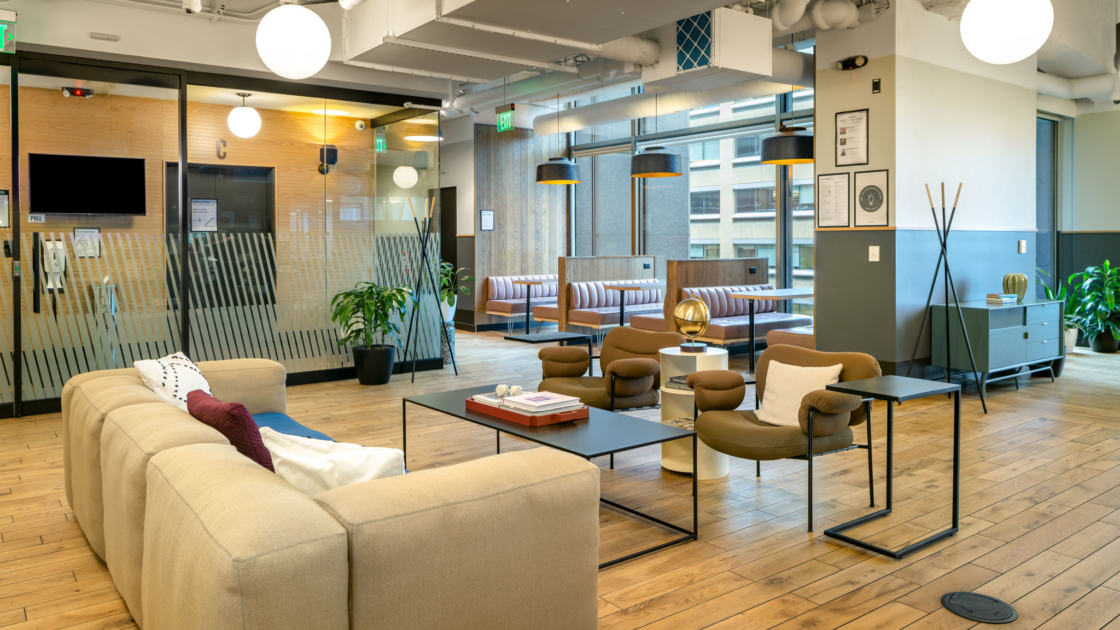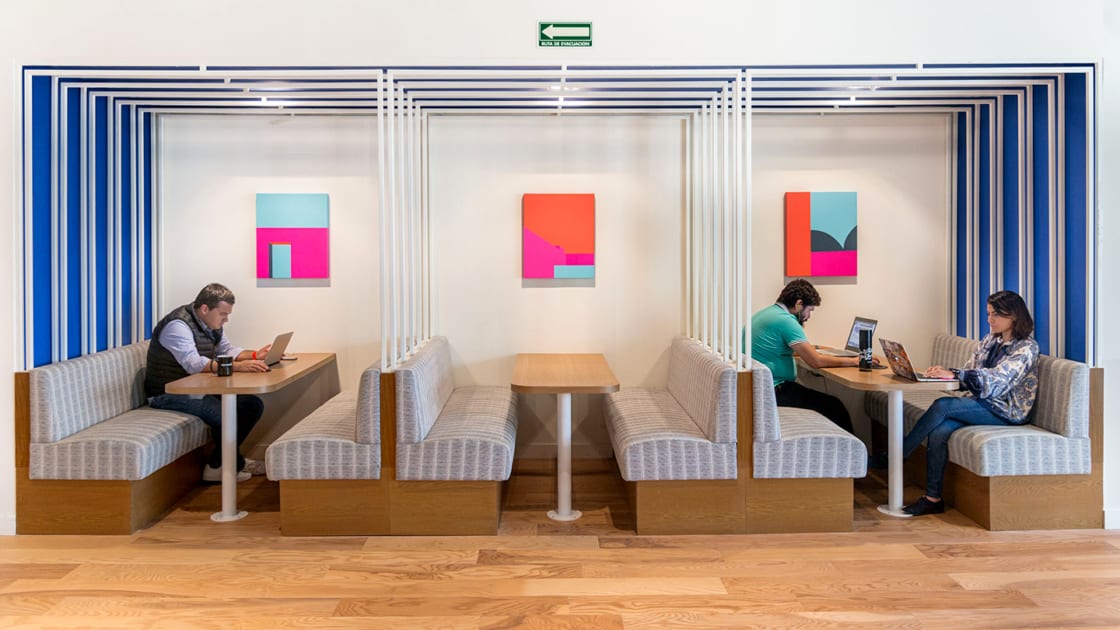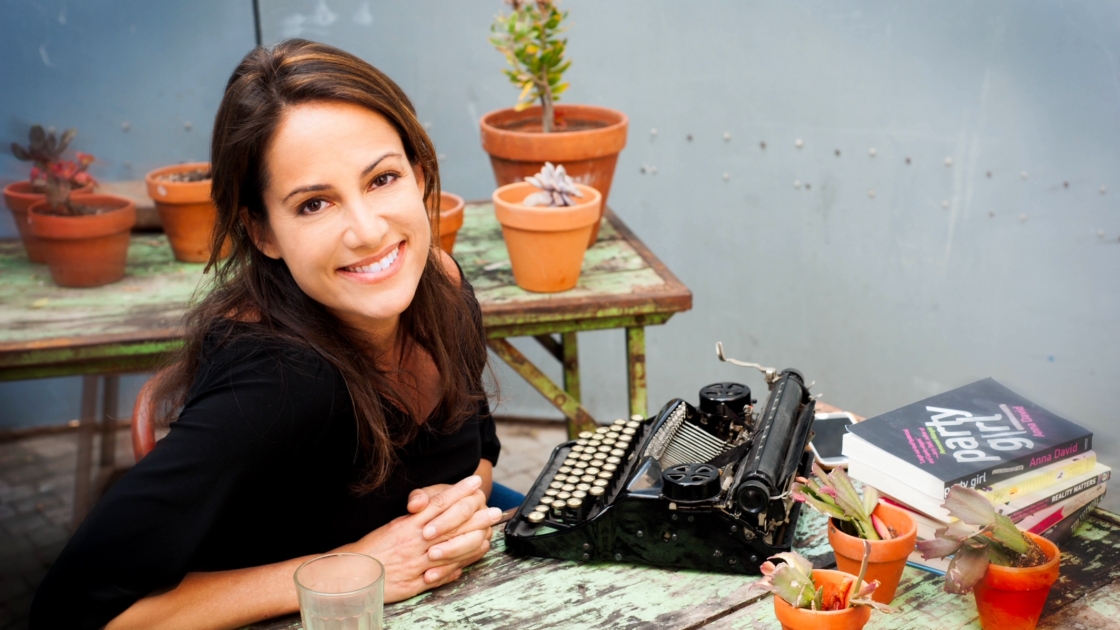What Do People Do All Day? takes a look at the work life, lunch habits, and downtime of people across different industries.
When Jason Ramirez was designing the cover for The Altruists, a family drama by first-time author Andrew Ridker, he drew from a visual moment that had struck him in the novel: “I remember the father in the story looking down at a crack in his driveway, and there was this dandelion sprouting out,” Ramirez says. “And I thought it was not only an interesting object, but an interesting metaphor for what was happening in the story—this family, and their relationships, end up choking one another like the roots of a weed.” And so he arrived at the cover’s simple yet intriguing image: a delicate bouquet of botanical misfits. “That’s probably one of my favorite designs recently,” he says.
As art director for Viking and Penguin Books, Ramirez is constantly cycling through manuscripts. “I’ll underline significant moments and make little notes and thumbnail sketches in the margins,” he says. The covers Ramirez creates could adorn—and play a role in drawing readers to—the next bestselling novel or prize-winning book. (Penguin Random House, the global parent company of Viking and Penguin Books, publishes more than 15,000 print books each year; Penguin’s best-selling titles range from classics like John Steinbeck’s The Grapes of Wrath to recent must-reads like Celeste Ng’s Little Fires Everywhere and Zadie Smith’s Swing Time.)
Ramirez’s work is divided into three seasons (spring, summer, and fall) with about 25 books each, and the process for each title begins with a briefing: Ramirez, his creative director, the publisher, editor-in-chief, and book editor discuss their vision for the package. “Sometimes the editors are pretty open; sometimes they’re very specific,” he says. “Sometimes my publisher’s very specific.” (The publisher, he notes, is the most important person in the room.) As for author input, which comes via the editor, Ramirez explains: “A best-selling novelist’s opinion carries much more weight than perhaps a first-time author’s …. [But] we definitely do try to listen to the writer, because at the end of the day, this is their baby.”
From there, the books are divided among Ramirez, his creator director, a second art director, and five designers, and they each start working on cover mock-ups, or “comps.” “When I assign a title to a designer, we’ll go over any hard expectations for the package that might have come up in the briefing,” Ramirez says. “But I always encourage my designers—and I encourage myself—to work beyond the stated expectations, because my personal philosophy is that we might think we know what we want … until we see something else. And oftentimes, we surprise ourselves.”

Below, Ramirez, who is working on the books that will publish in the spring of 2020, gives a snapshot of what he does all day—procrastination habits included.
Each morning begins with… a good intention. My alarm goes off at 6 a.m. Warmer days make this lofty wake-up goal more manageable, but usually after some negotiation with my alarm clock, I’m up for the day at around 7 a.m. I check my work email and prepare some breakfast to go before I’m out the door at around 8 a.m.
I first check my work email… before leaving home. (Oddly, I don’t think to look at my personal email until after I arrive at work.) The work emails I’m most likely to read first are those from my creative director or either of my two publishers, or messages related to a priority project. Unless it’s absolutely urgent, I will not reply to email until I’m in the office—I’m mostly checking it to manage my expectations prior to arriving.
My commute… takes me from Prospect Heights, in Brooklyn, to Midtown Manhattan in a bit over 40 minutes (on a good day). If I can snag a seat on the train, I read a manuscript or chip away at one of the many non-work-related books that tower over my bed. But I’m often not so lucky, and instead spend the commute standing and reading the political newsletters I receive each morning from Axios and Politico.
The first thing I do when I sit down to work: Raise my standing desk.
The thing most likely to break my focus: Noise. My office recently relocated from Hudson Square/West Village to Midtown, and with this move I reentered cubicle life. It has taken a bit of time to readjust to the white noise of loud talking and laughter, keystrokes, and mouse clicks.
The last time I daydreamed: It was on a recent Friday afternoon during a mandatory IT training session about what circumstances might allow me to work a day or two from home.
I eat at my desk… every day. I most always have breakfast at my desk, and, once in a while, lunch. (I’m not a huge fan of lunch—it tends to make me sleepy in the afternoon.)
I send my last email… from the office, around 6 or 7 p.m. I check work email a few times at night, including just before bed.
The site I’m most likely to waste time on: Apple News. (Now that I have banished Candy Crush from my phone, that is.) If I want to get lost down a rabbit hole or stew in idle aggravation, then Twitter.
My preferred email sign-off: Best, Jason.
If I’m being honest, my smartphone is… a chore, especially with the inundation of spam. In the span of one week, for instance, my phone exploded with robocalls from the Congo, Mali, Azerbaijan, Slovenia, Mozambique, Burundi, and the country of Georgia. Not to mention that instead of facilitating conversation and the exchange of information, the smartphone has become a social crutch for many to avoid potentially meaningful interactions. Is that honest enough?







